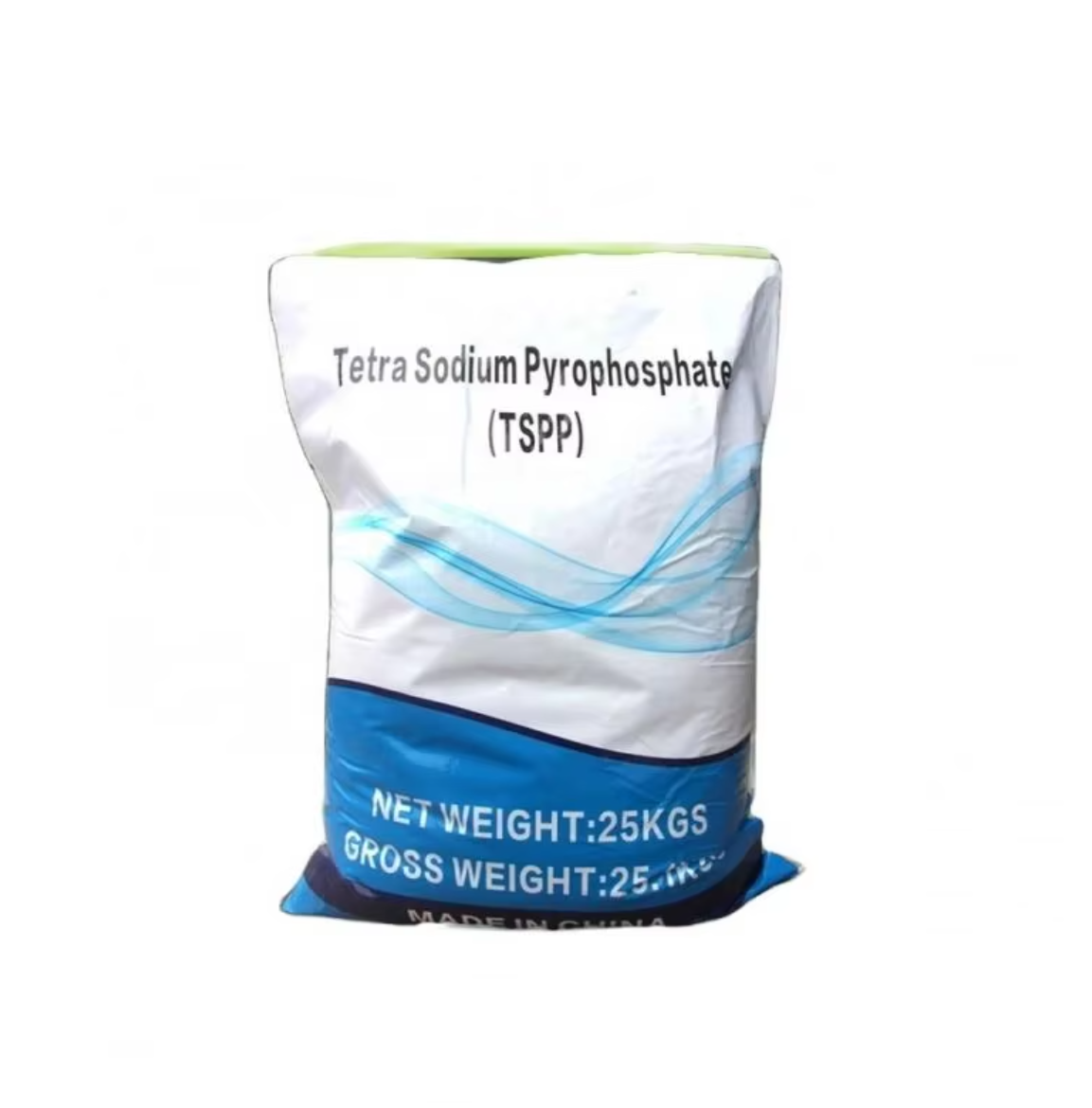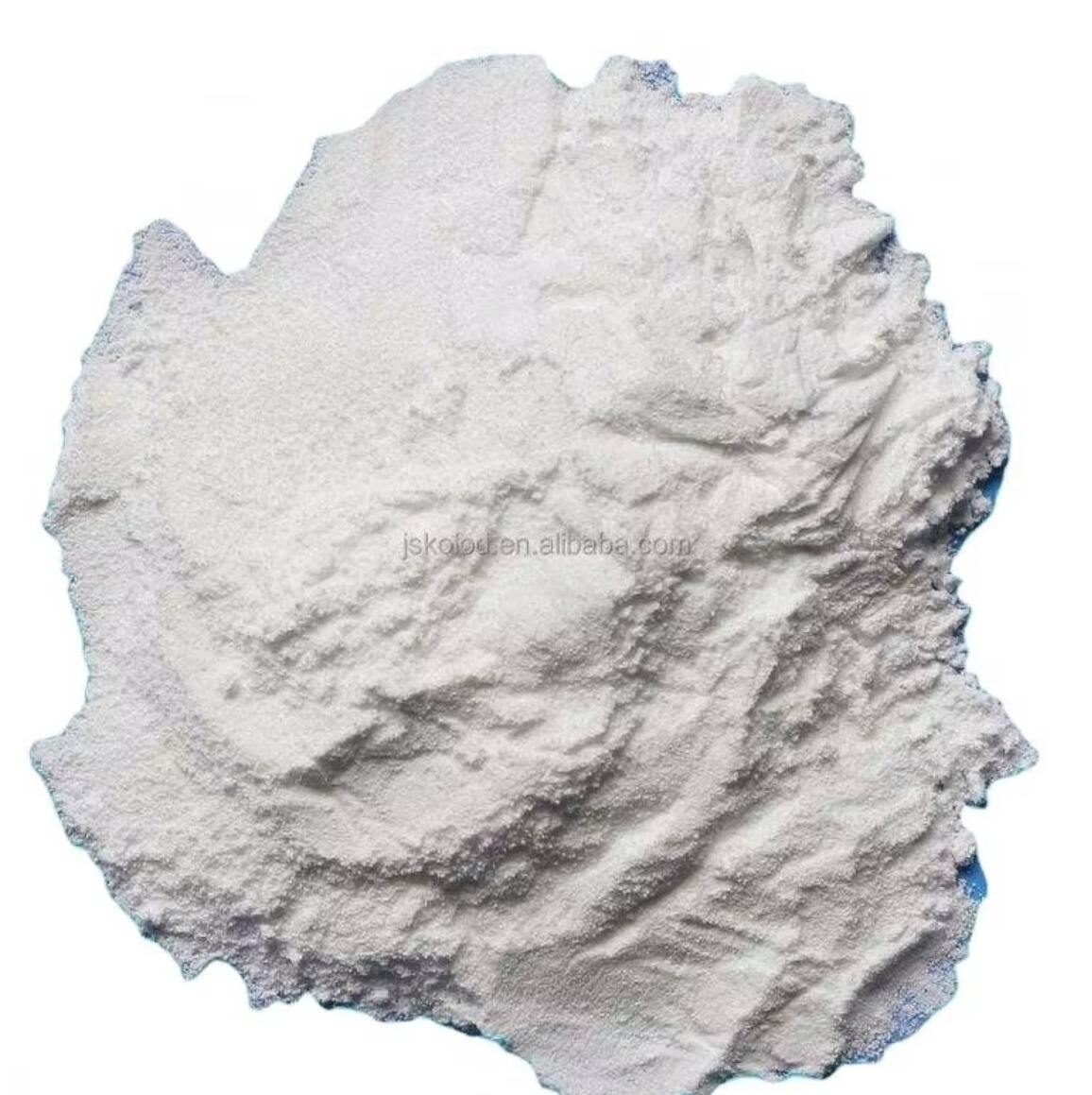Verstaan Behoorlike Hantering van Tetrasodium Pyrophosphate
Hoofriske van ongepaste hantering
Die werk met Tetranatrium Pirofosfaat (TSPP) gaan gepaard met sekere redelik beduidende risiko's omdat dit 'n irriterende stof is. Mense wat met hierdie stof werk, rapporteer dikwels probleme met hul vel en longe. Wanneer iemand aan TSPP blootgestel word, kan dit lei tot geïrriteerde vel of selfs ernstige probleme met die oë. Dit is hoekom werknemers besonders versigtig moet wees wanneer hulle daarmee werk. Langtermyn inaseming van TSPP kan ook die asemhalingsstelsel ernstig affekteer, dus moet maatskappye beslis goeie veiligheidsreëls hê. Daar is verslae van verskeie veiligheidsorganisasies wat aanteken wat gebeur wanneer mense nie die regte protokolle volg nie. Ons het gevalle gesien waar verkeerde hantering werklike ongelukke op die werkvloer veroorsaak het en produksielyne aansienlik vertraag het. Die saak is, besighede moet personeel behoorlik oplei oor hoe om veilig met hierdie chemikalie te werk. Die gebruik van beskermende toerusting en seker maak dat almal weet wat om te doen indien iets verkeerd loop, sal baie help om werksplekke veilig te hou.
Essensiële Persoonlike Beskermende Uitrusting (PPE)
Persoonlike beskermingsuitrusting (PPE) is kruisig tydens die hantering van Tetrasodium Pyrophosphate om blootstelling aan skadelike effekte te voorkom. Hoofbeskermingsuitrusting sluit in:
- Handskoene : Voorkom velkontak en moontlike irritasie.
- Oogskerms of Gesigsskywers : Beskerm oë teen ergerlike stof of sprit.
- Beskermende Kleding : Skep 'n skerm tussen die vel en direkte kontak met TSPP.
Verskillende soorte persoonlike beskermingsdrag (PPE) het elk hul eie rol te speel, maar wanneer dit saam gebruik word, vorm dit 'n soliede verdediging teen gevaarlike blootstelling. Om PPE in goeie toestand te hou deur middel van gereelde inspeksies, maak 'n wêreld van verskil. Uitgeputte toerusting werk nie meer behoorlik nie en kan werknemers kwetsbaar laat. Vir maatskappye wat met chemikalieë werk tydens TSPP-operasies, is dit nie net aanbeveel om soliede PPE-prosedures op plek te hê nie, dit is absoluut noodsaaklik vir enigiemand wat ernstig is oor werksplekveiligheid.
Ideale bergingsomstandighede vir Tetrasodium Pyrophosphate
Ideale temperatuur- en vochtigheidsvlakke
Die handhaving van die regte temperatuur vir Tetranatrium Pirofosfaat is regtig belangrik wanneer dit by die goeie berging kom. Die meeste kundiges beveel aan dat dit tussen 15 en 30 grade Celsius gehou moet word. Hierdie temperatuurvenster help om chemiese stabiliteit te behou, sodat die produk se doeltreffendheid oor tyd heen bewaar word. Chemiese veiligheidsstandaarde van verskeie vervaardigers ondersteun hierdie aanbevelings, aangesien dit help om die afbreek van die verbinding te voorkom en die houdbaarheidsduur te verleng. Vochtbeheer is nog 'n belangrike faktor. Lae vogtigheidsomgewings werk die beste, aangesien oormatige vog probleme soos klontvorming kan veroorsaak of die chemikalie in die algemeen minder stabiel kan maak. Sektoreprofessionele berg hierdie stof gewoonlik in droë areas met goeie lugversorging. Baie opslagfasiliteite het werklik toegewyde bergingsruimtes ontwerp vir chemikalieë soos Tetranatrium Pirofosfaat, waar beide temperatuur en vogtigheid sorgvuldig deur die jaar heen gemonitor kan word.
Vermyding van Kontaminasie en Onverenigbare Materiaalle
Dit is baie belangrik om Tetranatrium Pirofosfaat weg te hou van kontaminante en onverenigbare stowwe vir behoorlike berging. Skoon houers van glas of roesvrye staal werk die beste, tesame met toegewyde bergingsplekke wat droog en koel bly. Niemand wil hê dat hul produk deur onsuiverhede vermink moet word nie. Sterk sure en oksiderende middels moet beslis ver van hierdie verbinding gebly word, aangesien reaksies tussen hulle gevaarlike situasies kan veroorsaak. Behoorlike etikette op alle houers help werknemers om presies te weet waarmee hulle werk, wat foute verminder. Die skeiding van verskillende chemikalieë in bergingsareas voorkom onbeplande menging wat dalk hoeveelhede kan verongeluk of erger nog, gevaarlike reaksies kan veroorsaak. Hierdie basiese voorsorgmaatreëls dra baie tot die handhaving van kwaliteit gedurende bergingsperiodes.
Veiligheidsmaatreëls Tydens die Gebruik van Tetrasodium Pyrophosphate
Noodprosedures vir Uitsettingonerskille
Tetranatriumdifosfaat vereis vinnige optrede wanneer iemand daaraan blootgestel word. Vir velkontak is die eerste stap om die area onmiddellik met seep en 'n groot hoeveelheid water te was. Indien dit in die oë kom, is dit sinvol om hulle uit te spoel met stromende water vir ten minste vyf minute, en dit mag nodig wees om kontaklense uit te neem. Indien rooiheid of ongemak na die skoonmaak nie verdwyn nie, behoort persone 'n dokter te raadpleeg. Dit is belangrik dat personeel opgelei word oor wat gedoen moet word, aangesien dit beteken dat almal weet hoe om korrek te reageer. Arbeidshygiënerapporte dui daarop dat ondernemings wat hul noodreaksies oefen, beter met ongelukke kan werk en vinniger herstel na voorvalle. Reëlmatige oefeninge maak 'n groot verskil as dit by die veiligheid van werknemers rondom stowwe soos Tetranatriumdifosfaat kom.
Ventilasie en Werkplek Higiëne
Dit is regtig belangrik om goeie lugbeweging regdeur die werkplek te hê wanneer daar te doen is met tetratriet-pirofosfaat-deeltjies wat in die lug dryf. Wanneer daar genoeg vars lug wat rondbeweeg, keer dit dat die fyn poeiers as stof neersettle, wat beteken dat werkers dit nie soveel inasem nie. Dit skep 'n baie beter atmosfeer in die algemeen vir almal op die terrein. Skoonmaak na operasies moet ook nie 'n nagedagte wees nie. Reëlmatige vee en suig stof hou residu weg van opbou waar dit later probleme kan veroorsaak. Die meeste fasiliteite vind dat maandelikse inspeksies goed werk om dinge skoon en veilig te hou. Vir werklike ventilasieoplossings presteer plaaslike uitlaatstelsels gewoonlik die beste in hierdie situasies. Gasheers is nog 'n goeie opsie aangesien hulle besmette lug onmiddellik wegtrek van waar mense werk. Hierdie opstel voldoen aan alle standaardvereistes wat deur gesondheids- en veiligheidsregulasies bepaal word. Daar moet verseker word dat beide ventilasie en daaglikse skoonmaakprosedures konsekwent bly, wat 'n lang pad gaan om personeel te beskerm terwyl daar voldoen word aan die korrekte protokolle vir die hanteer van hierdie chemiese verbinding.
Beste Praktyke vir Stortingsbestuur en Verwydering
Stap-vir-stap Stortingreinigingsprotokol
Die hantering van stortings van Tetrasodium Pyrophosphate vereis 'n presiese stortingsresponsplan om veiligheid en doeltreffendheid te verseker. Hier is 'n omvattende volgorde vir die bestuur van sulke stortings:
- Onmiddellike Aksies : Begin met die afbakening van die strooiarea om ongeoorloofde toegang te voorkom. Die draag van geskikte persoonlike beskermende uitrusting is kruisig vir die voorkoming van blootstelling.
- Bevatingsmetodes : Gebruik absorberende materiaal om die verspreiding van die chemikalie te voorkom. Hierdie materiaal moet maklik beskikbaar wees en gemerk word vir vinnige identifisering.
- pH-toetsing : Voer pH-toetse uit om die giftigheidsvlak te bepaal en plan neutralisasie-stappe daarna.
- Nuttige werktuie en materiaal : Ugerus met items soos stofmaskers, beskermende handskoene en ogglasies, moet werknemers vinnig die uitsparing aanspreek en rommel ruim met bese en soppers in aangewese afvalbehouders.
- Kommer oor veiligheid : Die versekering van behoorlike hantering en persoonlike beskerming tydens uitsparingsbestuur verlaag die risiko van ongunstige gesondheidsgevolge.
Dit is raadsaam om na kundige opinies en riglyne van chemiese veiligheidsoutoriteite te verwys om volledige beste praktikke vir uitsparingsrespondens te verseker.
Omgewingsselowerige afrigtingsmetodes
Die ontgieting van Tetrasodium Pyrophosphate vereis metodes wat ooreenstem met plaaslike omgewingswetenskappe. Hier is hoe dit doeltreffend gedoen kan word:
- Gepaste Ontgietingsmetodes : Tetrasodium Pyrophosphate afval moet ontgieter word volgens plaaslike voorskrifte, gewoonlik in aangewese gevaarlike afvalfasiliteite wat omgewingsverontreiniging voorkom.
- Herwinningsopties : Evalueer moontlikhede vir herwinning of hernutting van Tetrasodium Pyrophosphate afval. Alhoewel herwinningsopties beperk kan wees, kan dit beduidend die omgewingsinvloed verminder as dit haalbaar is.
- Riglyne van Omgewingsagentskappe : Deur omgewingsbeskermingsagentskappe se voorskrifte te raadpleeg, kan besighede verseker dat hul afvalbestuurspraktyke ooreenstem met standaarde vir gevaarlike stowwe.
Aanhoudend aan hierdie veilige verwyderingspraktyke nie net ekologiese skade minimaliseer, maar ook stem saam met volhoubare besigheidsoperasies en bevorder omgewingsverantwoordlikheid.
Voor meer besonderhede oor die veilige hantering en verwydering van Tetrasodium Pyrophosphate, verwys na gesaghebbende bronne en bedryfstandaarde soos OSHA en EPA riglyne.
FAQ
Wat is Tetrasodium Pyrophosphate?
Tetrasodium Pyrophosphate (TSPP) is 'n chemiese verbinding wat in verskeie bedrywe gebruik word, hoofsaaklik as 'n buffermiddel, emulsifieerder of verdikker.
Wat is die gesondheidsrisiko's van die hantering van Tetrasodium Pyrophosphate?
Die hantering van Tetrasodium Pyrophosphate kan lei tot vel- en asemweginirritasie, en dit kan ernstige oogirritasie veroorsaak as gepaste voorsorg nie genomen word nie.
Watter PPE is nodig wanneer jy Tetrasodium Pyrophosphate hanteer?
Persoonlike beskermingsuitrusting soos handskoene, ogglasies of gesigsskywerders, en beskermende klere word aanbeveel om blootstelling te voorkom.
Hoe moet Tetrasodium Pyrophosphate opgeslag wees?
Dit moet gestoor word by temperature tussen 15-30°C, in 'n droë en goed geventileerde omgewing, weg van sterk sure of oksidantmiddels.
Wat moet gedoen word in geval van blootstelling?
Spoel die betrokke area onmiddellik met seep en water as huidblootstelling plaasvind, en spoel oë met water as oëblootstelling plaasvind. Soek mediese hulp as iritasie voortduur.
Hoe moet uitstortings van Tetrasodium Pyrophosphate bestuur word?
Gestort moet word bevat deur gebruik van absorberende materiale, hanteer met beskermende toerusting en weggedoen volgens plaaslike voorskrifte om veiligheid te waarborg.Â
Is herwinning van Tetrasodium Pyrophosphate moontlik?
Herwinningsopties is beperk maar kan ondervraag word om milieueinvloed te verminder, onderhewig aan haalbaarheid en plaaslike riglyne.
Inhoudsopgawe
-
Verstaan Behoorlike Hantering van Tetrasodium Pyrophosphate
- Hoofriske van ongepaste hantering
- Essensiële Persoonlike Beskermende Uitrusting (PPE)
- Ideale bergingsomstandighede vir Tetrasodium Pyrophosphate
- Ideale temperatuur- en vochtigheidsvlakke
- Vermyding van Kontaminasie en Onverenigbare Materiaalle
- Veiligheidsmaatreëls Tydens die Gebruik van Tetrasodium Pyrophosphate
- Noodprosedures vir Uitsettingonerskille
- Ventilasie en Werkplek Higiëne
- FAQ



